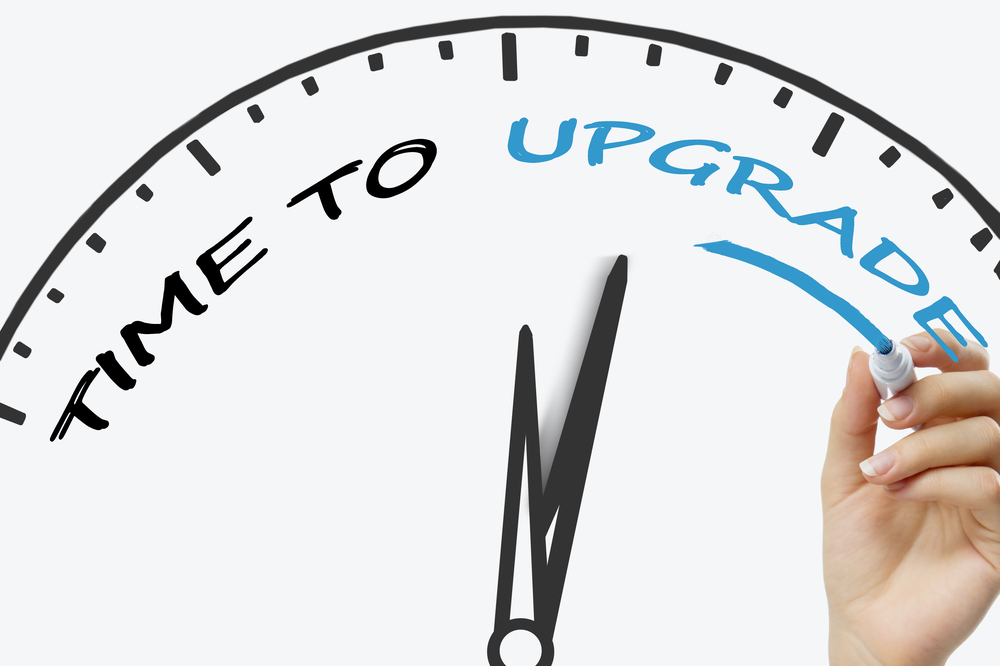In the first post of this three part series, Effective Customer Service Can be the Key to Small Business Growth, we talked about how small businesses need to protect their existing customer base if they want to achieve meaningful, sustainable growth. Providing effective customer service, in which issues are solved competently during the first contact, is a good step in this direction.
But to really deliver on customer expectations, getting help also needs to be easy and make customers feel good about their experience. This post will focus on what "easy" customer service looks like and a future post will discuss the emotional aspects of the customer experience. Delivering the "three E's" of customer service - effectiveness, ease of use, and emotional connections - is a proven recipe for increasing customer loyalty and retention.
What is "easy" customer service?
Have you ever been trapped in an endless IVR menu with no obvious way to reach a live agent? Have you been passed around to multiple agents because nobody knew how to solve your problem? Here's one most of us are familiar with - have you ever waited ten, fifteen, thirty minutes to talk to a support agent? These experiences are all the opposite of easy.
Easy customer service is characterized by speed, convenience, and choice. Modern technology has made it possible to provide all three and that same modern technology has also conditioned consumers to expect this from businesses. Gone are the days when people will readily tolerate long wait times and phone-only service. Advances in mobile technology, cloud computing, digital communications, artificial intelligence, connection speeds, virtual assistants, and more have created a culture that is used to choosing from a multitude of communication methods based on what people need to accomplish - for example, texting for short messages that need a quick response and emailing for longer, less urgent messages.
Examples of easy customer service.ashx?la=en&rev=2a311ef660f744f394246723fc624a5e&hash=B95FE45BB899515538FA8AB43CB3A186)
Here are some examples of how businesses can deliver on expectations of speed, convenience, and choice.
- A pizza restaurant has a chatbot on Facebook Messenger that allows people to place orders and track the status of deliveries. The chatbot also cross-sells items like soda and bread sticks, resulting in higher average revenue per order.
- Although the contact center closes at 9 pm, customers of this bank can interact with the interactive voice response (IVR) system after hours to check their account balance and find out the status of their mortgage application.
- Michael is filling out an online insurance application when he runs into a snag. He clicks the onscreen chat button and is connected to a helpful agent who is able to co-browse Michael's application and talk him through how to correct and finish it.
- Assembling the backyard playground equipment is harder than John anticipated. Fortunately, the manufacturer offers video chat support so the agent can view all those leftover parts and advise and watch while John puts them in place.
Different situations call for different interaction channels. Customers value being able to choose the method that provides them with quick and convenient help.
4 signs your customers are having a hard time reaching you
Luckily, easy customer service isn't one of those "you'll know it when you see it" kind of things. There are some very objective KPIs that serve as barometers to let businesses know if their customer service operation is making it hard or easy for customers to receive assistance. If any of the following are true, it's time to figure out how to introduce more ease of use in the service model.
- Consistently high ASAs. Average speed of answer (ASA) measures how long callers, on average, have to wait in a queue before they're connected to agents. Consistently high ASAs make it harder for customers to receive the help they need. Additionally, many consumers have zero tolerance for long wait times and most will hang up if forced to hold for more than a couple of minutes.
It's a universal truth that no one likes to wait in phone queues. Making customers wait a long time sends several clear and negative messages:
- The organization doesn’t value their time
- The organization doesn’t value their business
- The contact center, and by proxy the entire business, doesn't have its act together
- Any combination of the above
Customers who have bad experiences, like high wait times, are less satisfied and less loyal. In fact, our consumer benchmark study revealed that more than 80% of consumers are likely to switch brands after a bad customer service experience. Low ASAs make it easier for customers to get a hold of businesses when they need help and can reduce churn.
- Consistently high average hold times. Bob waited patiently in the queue, he is finally connected to a customer service agent, and she... puts Bob on hold. Nothing about this experience is "easy." Agents put customers on hold for a number of reasons, but the most likely scenario is that they don't know how to solve the customer's issue and put them on hold while seeking help. Here's what's probably going on in the Bob’s mind while he’s listening to hold music:
- This business doesn't value my time
- The agent doesn't know what she's doing
- This shouldn't be this hard
- Maybe it's time to find a different bank/supplier/shoe retailer/travel agency/etc.
Data on hold time is captured by the automatic call distributor (ACD) and should be reviewed regularly to determine if a business is making it easy or hard for customers to get help.
- Consistently high transfers. Sometimes customers just end up with the wrong agent and need to be transferred to someone that can help them. But if misrouted calls are standard practice rather than an exception, that's a big problem. Being bounced around like a hot potato is not an "easy" experience, especially since the customer usually needs to repeat his issue to every agent along the transfer chain.
The inverse - consistently routing customers to the right agents - makes it easier for customers to connect with businesses to get their issues resolved. Like hold times and ASA, transfers are also tracked by ACDs and should be part of every "ease of use" assessment.
- Consistently low self-service deflection rates. Customer self-service, delivered with tools like IVRs and chatbots, is supposed to add speed, convenience, and choice to the customer experience. Additionally, it's supposed to deflect more costly agent-assisted contacts such as phone and chat interactions. When deflection rates are low, that means self-service tools aren't performing well and might be doing more harm than good.
It's frustrating for consumers to try self-service, only to discover the mobile app is glitchy or the IVR authentication process is overly complicated. What should have been a single, successful attempt has now turned into two with the bad aftertaste of the failed self-service tainting the experience.
5 common problems that prevent ease of use 
When the previously mentioned metrics fall short of target and ease of use is lacking, contact center leaders should begin their troubleshooting efforts by assessing their software tools, channel offerings, and agent staffing levels. Here are some specific problems that are commonly behind ease of use issues:
- Voice-only support. Phone is still one of the most used and preferred channels, but in today's digital world, it's not enough. Consumers, especially Gen Z and Millennials, expect businesses to provide them with digital communication options. In fact, our research revealed that 90% of consumers are more willing to do business with companies that offer multiple communication channels. It's become a business imperative.
Our consumer benchmark study also revealed that email and chat are two of the most used and popular digital channels. Although not as commonly used, mobile apps, text messaging (SMS), and private social messaging (like Facebook Messenger), also deliver high satisfaction scores. Consumers are using and liking digital support options because they can offer speed, convenience, and choice. Organizations that are committed to ease of use are already reaping the CX rewards offered by digital channels.
- Outdated ACD. If transfer rates are high, there's a good chance the ACD isn't doing its job properly. An ACD's primary responsibility is to route a caller to the agent who is most qualified to assist her. This helps ensure the agent won't have to transfer the call or put the customer on hold while she asks her supervisor for help.
Industry leading ACDs are able to perform very sophisticated routing based on factors like the number dialed, the nature of the inquiry, agent skills, and caller sentiment. When an ACD isn’t performing well, it might be because it isn't configured correctly. However, there's also a chance that it just isn't up to the task. It might be time to replace that old, low-end ACD.
- IVR has limited or no self-service capabilities. An IVR is the system that greets callers and allows them to interact with menus. Its traditional role is to team with the ACD to enable smarter router. However, modern IVRs have an equally important role - facilitating self-service. Self-service makes customer service easier by offering speed and convenience to customers with simple needs that want to solve their own problems. Plus, since it's available 24/7, customers can receive support even if the contact center is closed for the day.
IVR self-service should result in respectable call avoidance, as measured by self-service deflection rates. If deflection rates are low, call center leaders can view IVR reports to see how many customers are choosing the self-service path and at what point they're bailing out. As with ACDs, performance might be improved with configuration changes. But, also like ACDs, some IVRs just aren't capable of handling today's more complex requirements.
- Insufficient agent staffing. When ASA is consistently high, there are several possible factors that may be causing it. One of the first things contact centers should assess is agent staffing. Are there enough agents and are they scheduled at the right times? A customer service agent shortage will lead directly to higher wait times.
If a contact center uses skills-based routing, the staffing analysis becomes more complex. For example, there might be plenty of service agents, but a shortage of sales agents. Or maybe most of the chat agents are scheduled during the day even though chat volume is highest at night. Contact centers who don't have good workforce management practices risk damaging customer relationships because they don't have adequate staffing.
- Inadequate operational reporting. Assessing whether a business delivers "easy" or "hard" customer service is highly dependent on having ready access to useful data. However, contact center leaders don't always have the data they need. Maybe accessing transfer information would require a new, expensive report, or perhaps supervisors can't drill down to the agent level so they can't identify who is having problems.
In such a data-driven environment, not being able to retrieve key operational data is a significant barrier to managing and improving performance. Customer experience can suffer when data is locked up and inaccessible.
Outdated software - the root of ease of use issues? 
The problems we just discussed are frequently caused and magnified by outdated, legacy systems. Older software tools can have the following limitations:
- Limited features - outdated software doesn't have many of latest features. We've already discussed limited IVR self-service capabilities. Other examples are archaic agent desktops, workforce management systems that can’t reforecast on the fly, and lack of omnichannel routing capabilities.
- Hard to configure - legacy ACDs and IVRs often require vendor involvement or programming skills to make configuration changes. This means longer lead times that hamper quick reactions to changing business conditions.
- Difficult to integrate - to get the most from contact center software, the different modules must be integrated with each other and other business systems such as CRM applications. Outdated applications that don't use APIs don't always "play nicely" with other software.
- Outdated technology - modern contact center software leverages technology like cloud computing and artificial intelligence, giving it a distinct advantage over legacy systems.
- Inflexible reporting - as previously discussed, outdated software doesn't always provide reporting flexibility, making it difficult for contact center leaders to optimize performance.
Recommendations 
The last ten years have produced exponential advancements in contact center technology and capabilities. When paired with consumers' emerging preferences for digital customer service, the writing is on the wall - contact centers need to modernize. Here are five ways to do that.
- Implement digital channels. To meet customers where they are, organizations need to implement digital channels or risk becoming obsolete. What those channels are should be determined by customer behavior, preferences, and demographics. Businesses that use the best cloud contact center software can easily implement or retire digital channels, giving them customer service flexibility.
- Upgrade ACD capabilities. To make things "easier" for customers seeking agent assistance, they should be matched with the agent who is most qualified to resolve their issue. This will help ensure the customer doesn't get transferred or put on hold during the interaction. Modern ACDs perform smart routing by assessing customer needs and agent skills in order to make the best possible match. Additionally, ACDs that use predictive logic can take into account the customer's profile, including interaction history. This enables a scenario, for example, in which the customer is routed to the same agent who helped them the last time they called.
- Add/Upgrade IVR and AI chat bots. To enable meaningful self-service, and therefore make customer service easier, contact centers may need to upgrade to an IVR with speech capabilities that integrates easily with knowledge bases and back-end business systems. Taking capabilities a step further, conversational IVRs that are integrated with AI-powered chatbots can further improve self-service success. Imagine Siri in your IVR. The possibilities are intriguing.
- Add Workforce Management to forecast and staff the right number of agents. To provide easy customer service, contact centers need to have the right number of agents and they need to be scheduled at the right times so customers don't have excessive wait times. Workforce management software automates and adds accuracy to complex forecasting and scheduling processes. As smaller contact centers grow and add digital channels, spreadsheets and manual processes won't be sufficient anymore. When forecasts and schedules are consistently inaccurate and cause CX issues, it's probably time to implement good workforce management software.
- Upgrade operational reporting. Industry leading reporting and analytics tools can provide the information contact center leaders need to ensure customers are having "easy" experiences. Organizations should look for software with a multitude of out-of-the-box reports that reflect reporting best practices. Additionally, end-users should be able to easily modify or create reports and drill down to identify the source of issues. Armed with relevant, real-time information, businesses can continuously improve their CX delivery.
Final thoughts
There's a genuine business imperative for providing customer service that offers speed, convenience, and choice. When customers need help, they want ease, not hassle. Customers will reward businesses that provide ease and walk away from businesses that don't. If small businesses want to grow and thrive, especially in today's economy, they need to satisfy their customers with convenient service. Implementing industry leading contact center software is the right solution for making meaningful improvements to customer experience.
Let NICE inject ease of use into your customer service delivery
NICE CXone is the leading cloud customer interaction platform—100% focused on helping contact centers achieve their customer experience goals. CXone makes it easy for customers to get the personalized help they need by engaging via convenient digital, mobile, and social channels and quickly connecting with the most skilled agent (who can resolve their issue on the first attempt).
See what some of our clients have to say about CXone ACD/IVR. Then watch our demo video to see how CXone IVR integrates with chatbots for improved self-service. Finally, check out our software package options, specifically designed for small business needs.
And watch for the next post in this series in which we’ll be discussing the importance of making customers feel good about their service interactions.




